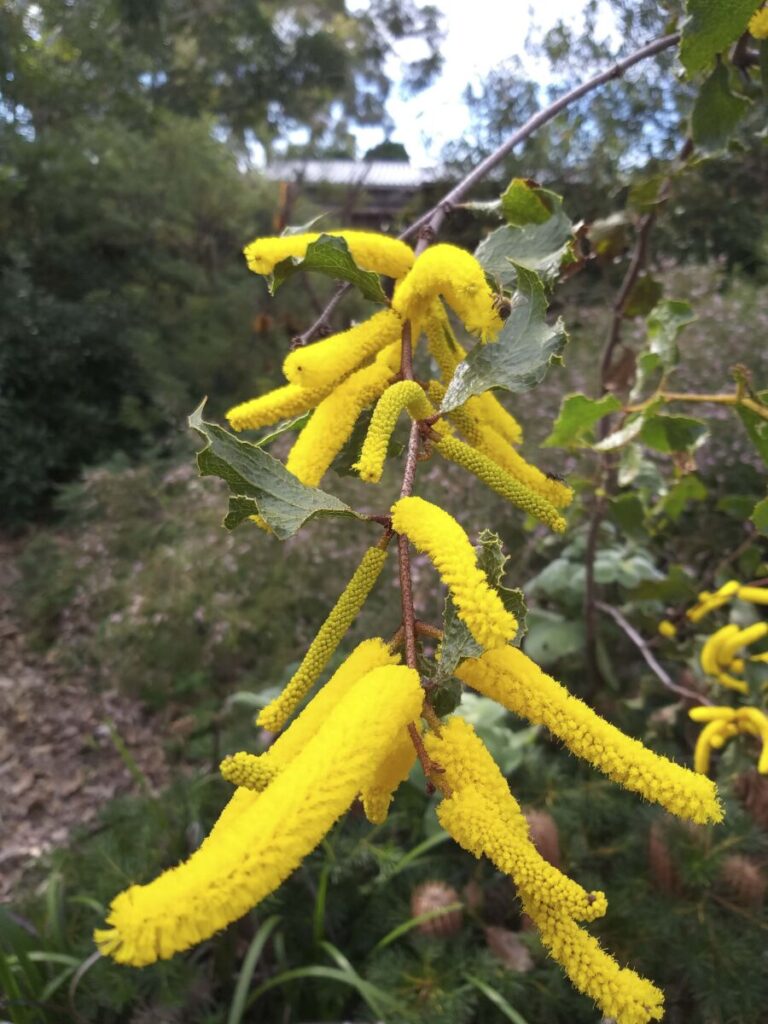Acacias are very representative of Australia. With about 1,000 species, these shrubs and trees are found across Australia in a range of ecosystems, including rainforests. They are tough, hardy, and opportunistic, flowering throughout the year, particularly in winter, and providing a blaze of bright colour from cream to yellow to gold. In the natural environment, they are an important food source and help fix nitrogen in the soil through bacteria on their root nodules.
The genus name Acacia is derived from the Greek word ‘ake’ or ‘akis,’ meaning sharp point, referring to species found in Africa that often have thorns. The common name “wattle” is an Anglo-Saxon word meaning woven, referring to the saplings (acacias and others) that were woven or interleaved to form the framework in “wattle and daub” buildings during early colonial days.
Acacias display great diversity in their flower arrangements, foliage, and fruit. The individual acacia flowers can be arranged into a ball inflorescence or a cylindrical spike. These flowers are pollinated by insects. Foliage can be bipinnate (feathery or fern-like) or consist of phyllodes, which are flattened leaf stalks that perform the function of leaves. The bipinnate forms are ancestral and more vulnerable to heat and dryness. Most acacias have phyllodes, which evolved to cope with Australia’s dry conditions, and they come in all shapes and sizes. The Acacia genus is part of the Fabaceae family (with a complex taxonomic history), and the bean-like pods containing a single row of seeds also vary in size, shape, and colour. The seeds are harvested by ants and stored underground.
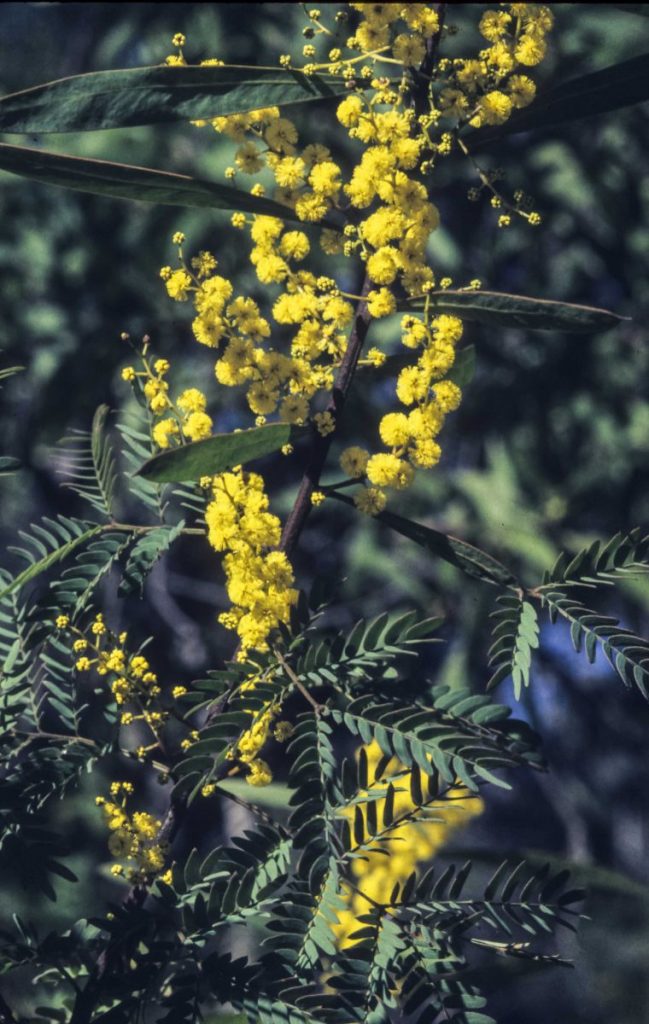
While most acacias have cream to yellow flowers, one species, Acacia leprosa, has red flowers. It is sold as Acacia leprosa ‘Scarlet Blaze,’ but a hardier choice for Sydney may be the A. leprosa x howittii cross sold as ‘Twilight Glow,’ with an orange flower. There are an increasing number of cultivars available as shrubs and groundcovers, including Acacia cognata and Acacia howittii. An acacia now rare in Sydney due to habitat loss is the shrub Acacia pubescens(Downy wattle), with finely hairy branchlets. It is found in open forests on clay soils in inner western Sydney.
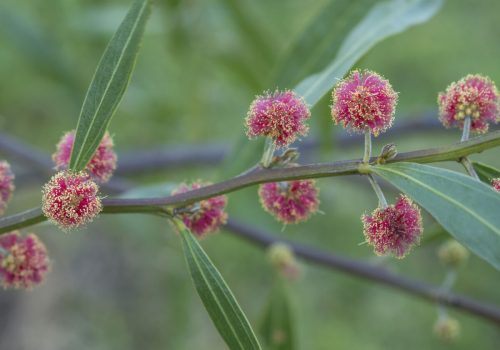
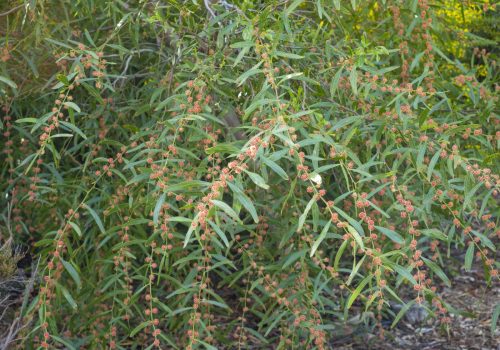
With their widespread availability across the country, acacias were an important resource for Aboriginal people. The seeds were ground and roasted before being eaten (not all species are edible), the gum was used as food, the bark and leaves were used for medicinal purposes and to stupefy fish when thrown into water, and the grubs under the bark and roots were eaten, such as the witchetty grub under Acacia kempeana. The timber was used for tools and weapons. Many of these uses are related to the tannins found in acacias.
Acacias are also used as cultural symbols to represent Australia. For instance, the medals in the Order of Australia are inspired by the wattle ball blossom. Our national floral emblem, only officially gazetted as late as 1988, is Acacia pycnantha, which was important in the tanning industry due to its high tannic acid content. Unfortunately, it does not grow naturally in Sydney. Our national colours of green and gold, seen at the Olympics and other sporting events, are inspired by wattles.
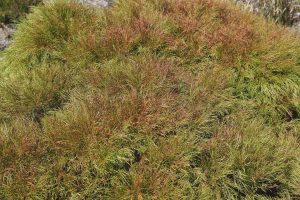
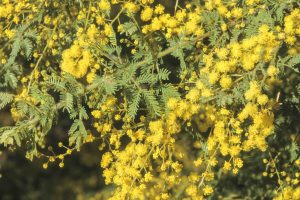
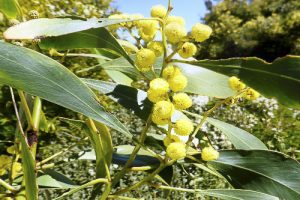
National Wattle Day was officially gazetted in 1992 as 1 September: it’s “a celebration of Australia – its land and its people.” APS NSW member Maria Hitchcock OAM was a driving force. See the Wattle Day website for ideas on how to celebrate.
Let’s overcome some myths. Acacias have large, sticky, heavy pollen which is dispersed by insects, not blown by wind, and is unlikely to cause allergies. Acacias are fast-growing and, as part of the ecosystem, are subject to insect attacks, but if you plant them in the right spot and keep an eye on them, you can treat pests early.
With about 1,000 Acacia species and many cultivars for the garden, there’s one for every spot. See our plant database on the APS NSW website. Have a closer look at an amazing acacia near you. The Australian Botanic Garden at Mount Annan has an acacia garden, and public gardens such as Joseph Banks Native Plants Reserve at Kareela, Sylvan Grove at Picnic Point, and Stony Range at Dee Why feature local species as well as others from further afield.
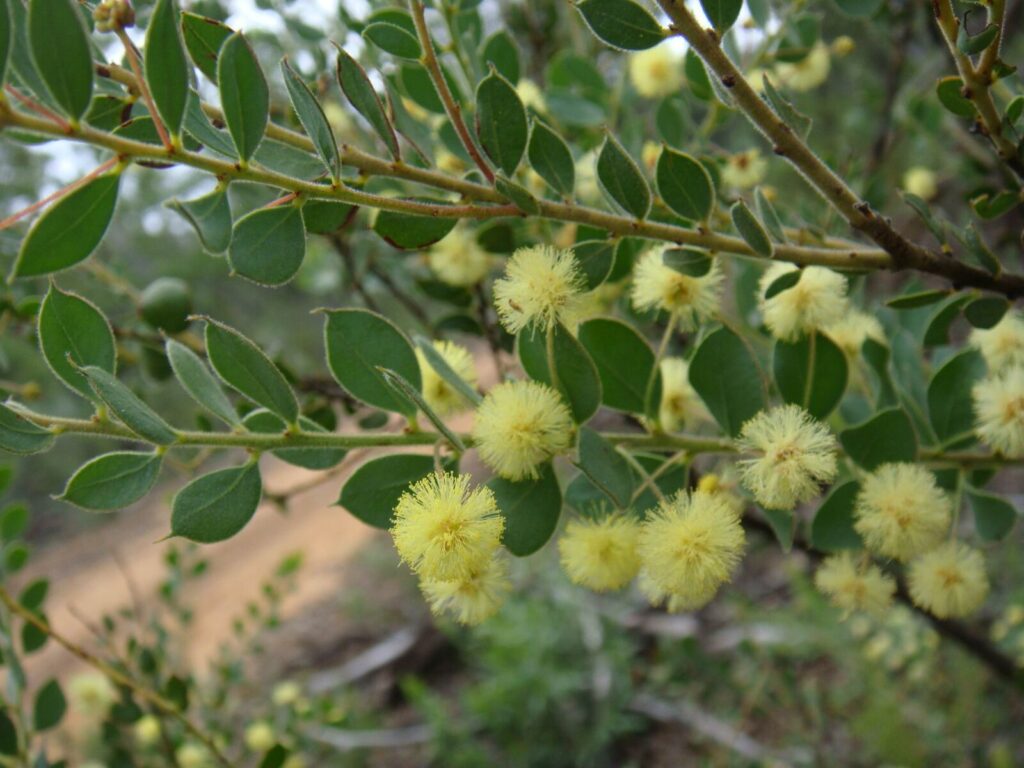
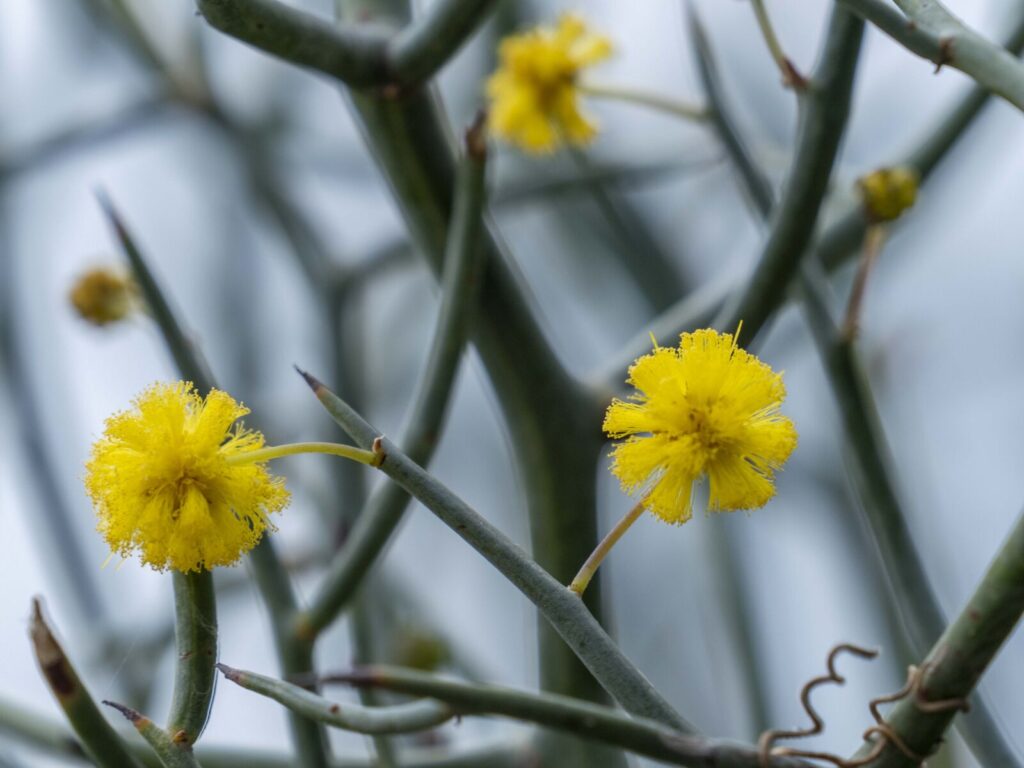
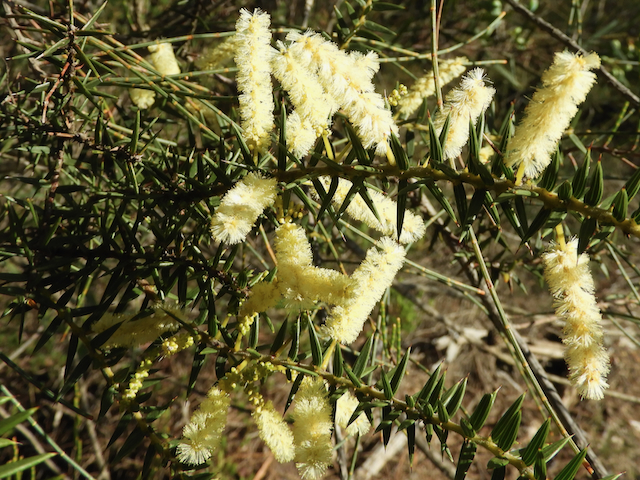
More information
- Acacia Study Group of the Australian Native Plants Society (Australia) with regular newsletter FREE
- Hitchcock, M. (2012) A Celebration of Wattle: Australia’s National Emblem.
- Robinson, L. (2003) Field Guide to the Native Plants of Sydney, Kangaroo Press.
- WATTLE version 3 (2023) interactive identification online + app $9.95,
- WA Herbarium
More information on the APS website
Our plant database has 117 acacias:
Check these two articles on the APS NSW website:
- Celebrate Wattle day, with a list of resources about acacias:
- Wattle day – why is it 1 September by Alan Fairley
Rhonda Daniels, Australian Plants Society Sutherland Group
